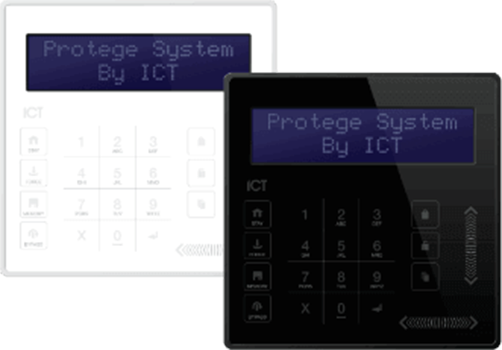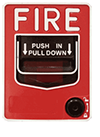Video MGMT System
 Access Control
Access Control
Voice & Data Wiring
 Burglar Alarm
Burglar Alarm
 Fire Alarm
Fire Alarm
Video MGMT System
Voice & Data Wiring
THOUGHT CENTER > Blog > Security Systems
February 28, 2022
According to research firm HIS Markit, it is estimated that around one third of the 62 million cameras installed in North America are network surveillance cameras. The firm further posits that majority of new security devices manufactured and sold these days are IP-based, including access control readers, panels, door locks, and even fire detectors.
The IP-based devices are popular because they do bring significant benefits compared to legacy hardware. However, they do have a downside – they are also vulnerable to an increasing number of threats.
Being Internet-capable gives malicious individuals a vector for attack, as opposed to traditional devices that are inaccessible except for people who are on-site. The Wall street Journal and some mainstream news outlets have caught wind of massive DDoS attacks that strangely use hijacked cameras and recorders as part of botnets, and there are also cases of hackers taking control of internet-capable nanny cams and using it to spy on people’s private lives.
These breaches serve as a wake up call to the industry, and should never be taken for granted. If you or your internal staff are determined to secure your video surveillance system against security breaches, here are some vulnerabilities that you should watch out for:
Most IP-based security systems have vulnerabilities that stem not from mistakes, but are inherent in the structure of the systems. These include:
Automation has a number of benefits, chief among which is that it reduces the risk attributed to human error. Additionally, automation can reduce the required workload and knowledge needed to implement best practices for keeping systems protected from threats.
On the other hand, security managers need optimal access to the ecosystem, both in terms of physical and software. Simply monitoring the feeds is not enough, as there is a need to monitor the hardware itself, right down to the source cameras. This helps prevent security lapses stemming from damaged cameras or incorrect settings.
Automation tools can be used on the front end in order to implement best practices, such as deploying a protected VLAN for the system, maintaining the login credentials of the camera, and restricting the switch ports to accepting only the MAC addresses of the cameras, so that unauthorized rogue devices cannot access the network even if plugged through an exposed Ethernet port.
Automated cyber protections can also be used to monitor and log activities in the network, which allows security personnel to detect suspicious activity and respond accordingly. These include:
Some automation tools can automatically implement security measures when abnormal behavior is detected, such as disabling a device or blocking access to specific ports, but even the ones that only generate alerts will still be useful when it comes to preventing security breaches.
It is imperative for security staff to keep their video surveillance system maintained and monitored, as one never knows when incidents will occur. You do not want to be caught unaware when a potentially devastating incident has occurred while the video surveillance equipment is not working. It is not only the equipment itself, there is also a need to ensure that the employees and staff are fully trained or at least made aware of security best practices, since the most robust of surveillance equipment can still be exploited if the weak link is an absent-minded or easily-fooled security staff.
For more information, visit our page on CCTV security cameras in Waterbury CT or contact for consultation.
NOT COMPLETELY SURE?
860-748-4292